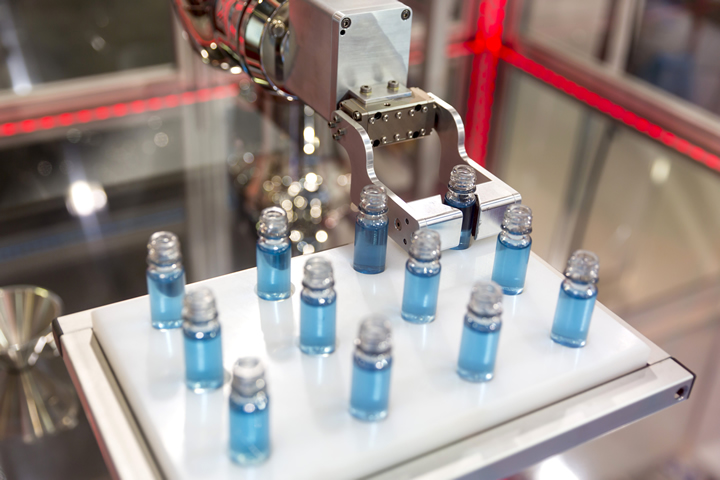Beyond the Camera: Network Choices that Impact Machine Vision Systems

On today’s factory floor, a split-second decision made by a machine vision system can mean the difference between a perfect product and a costly defect. As automation accelerates, understanding the network that connects hardware with software will help ensure that machine vision systems operate at their full potential.
In the rapidly evolving landscape of smart manufacturing, machine vision has become the go-to technology to accelerate automation. From defect detection on assembly lines to guiding robotic arms with precision, these AI-powered "eyes" are transforming how factories operate and have become an indispensable component for quality control, adaptive decision-making, and operational efficiency. An automotive manufacturer, for instance, may use machine vision to instantly identify microscopic paint defects on car bodies, or in pharmaceutical production, machine vision systems ensure every pill bottle is correctly sealed and labeled before shipment.
To operate, these machine vision systems require both hardware and software components, working in concert to capture, process, and analyze visual data: a controlled lighting system to illuminate the object, a precise lens to focus the image, and a camera with an image sensor to capture thousands upon thousands of images every minute or even every second. And with GPUs (Graphics Processing Unit) embedded in the hardware, algorithmic software functionality can run real-time analysis for automated decision-making and action, such as part rejection, robotic navigation, and maintenance alerts.
Together, these hardware and software functions enable machine vision systems and underpinning that entire operation, is the network infrastructure.
Powering the Eyes of AI
Consider the camera sensors the "eyes" of your machine vision system. In many manufacturing scenarios, multiple cameras are required to provide comprehensive coverage. The network, typically through switches, connects the data flow from each camera to the central or distributed processing units. But these cameras also require electric power to function and in complex manufacturing environments, traditional power outlets are often scarce or inconveniently located, making it hard to sufficiently deploy and power the number of cameras required to run an automated operation.
To help solve that challenge, networking switches designed for industrial environments play a significant role in simplifying installation by enabling a higher degree of flexibility with single-cable solutions that transmit both data and electrical power over standard Ethernet cables. When introducing new automation in an existing manufacturing plant, for example, where dozens of high-resolution cameras are needed for continuous inspection, Power over Ethernet (PoE) switches can allow for rapid deployment without the expense and complexity of installing new electrical outlets.
Fueling the Brains of AI
If camera sensors are the eyes, GPUs act as the brains, processing vast amounts of visual data to enable real-time decisions. There are two main architectures for deploying this intelligence: the distributed model, where each camera has its own dedicated processor or GPU for local analysis, and the centralized model, where data from multiple cameras is sent to a central industrial PC or server for collective processing.
In the distributed approach, each camera can act independently but requires more power, making efficient network connections essential for timely data exchange. In the centralized approach, multiple camera feeds are aggregated and analyzed together, providing broader context but also placing significant demands on network bandwidth and reliability.
In both cases, the network is critical—not only for supporting the movement of large volumes of high-resolution video data (such as 4K at 60 frames per second) with minimal latency, but also for ensuring real-time performance. With applications running on the network to guide precision robotic movement and quality control, every millisecond counts, and any delays can lead to defects, production slowdowns, or safety risks.
In a high-speed beverage bottling plant, for instance, machine vision systems continuously inspect for correct fill levels and cap seals. Even a millisecond of network latency could result in thousands of defective bottles passing undetected, leading to costly product recalls and significant waste.
Ensuring Operational Continuity
While machine vision systems are designed to perform visual inspections and trigger automated actions, the inherent sensitivity of the data they handle—including proprietary product specifications—means the underlying network also plays a critical role in protecting the system's integrity, safeguarding continuous operations, and minimizing costly disruptions. From cameras to controllers, today’s industrial switching and operational technology security solutions can help identify vulnerabilities, detect unauthorized access attempts or unusual data flows, and flag any deviations that could jeopardize uptime, helping ensure consistent production quality, safety, and operational continuity.
From a Single Station and Beyond
In the smart factory, a well-planned network also allows manufacturers to scale their machine vision deployments from a single inspection station to a fully automated production line with dozens of integrated systems. And with remote and wireless connectivity bridging the worlds of operational technology and information technology (IT), the underlying network can help enable configuration, monitoring, and troubleshooting of cameras and processing units from distant sites, reducing downtime and the need for on-site interventions.
As manufacturing continues its journey towards Industry 4.0 and beyond, machine vision systems will only grow in complexity and importance. For manufacturing leaders, understanding and prioritizing the network's role helps ensure that machine vision systems can operate at their full potential, delivering the precision, efficiency, and quality control these new use cases require.
Featured Product

